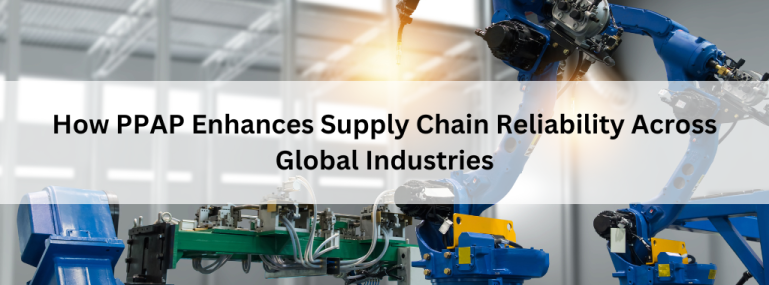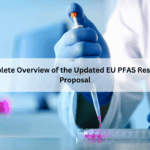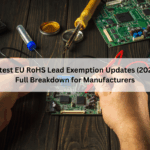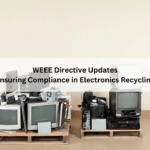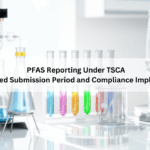In the aerospace industry, PPAP (Production Part Approval Process) plays a crucial role in quality assurance and risk mitigation. Although PPAP was initially developed for the automotive industry, its principles are not just adopted in aerospace they are elevated and rigorously enforced to meet the exacting standards of spacecraft and aircraft component design, manufacturing, and supply chains.
PPAP defines a well-structured methodology that validates a supplier’s manufacturing process and confirms its ability to consistently produce parts in alignment with customer-specific requirements and the engineering design record. In aerospace, suppliers must follow stringent demands, implement robust process controls, and demonstrate capability to deliver components that ensure safety and performance throughout the aircraft’s extended operational lifespan.
The main objective of PPAP is to ensure that every customer requirement has been properly understood and implemented by the supplier.
The aerospace industry faces unique challenges compared to other sectors due to its criticality, long product life cycles, regulatory oversight, and highly complex supply chains. Unlike commercial products, aerospace components demand an almost zero-defect mentality, and any failure could lead to catastrophic consequences, including loss of life and severe economic impact.
Key challenges in aerospace PPAP implementation include:
- Low Production Volumes: Unlike automotive, aerospace deals with small-batch production and custom parts, making statistical process capability studies more difficult and results less precise.
- Long Product Life Cycles: Components must remain in service for decades, requiring strong traceability and detailed documentation over long periods.
- High Regulatory Oversight: Standards like AS9145 and AS9100 add layers of approval beyond traditional automotive PPAP requirements.
- Engineering-to-Order Complexity: Many parts are designed for a single aircraft model, complicating the use of standardized PPAP templates.
- Supplier Capability Gaps: Suppliers often struggle with PPAP documentation elements such as FMEA, control plans, MSA, and process study reports if they lack experience.
Global Supply Chain Coordination: Time zone differences, language barriers, and varying regulatory environments make it challenging to align PPAP expectations across international suppliers.
To address these challenges, PPAP in aerospace is tailored to act as a proactive risk mitigation tool. The process ensures that suppliers are not only aligned with engineering specifications but also capable of consistently meeting the required standards.
PPAP’s role in aerospace includes:
- Extreme Criticality – Preventing failures before mass production to minimize risk.
- Zero-Defect Mentality – Ensuring both the process and the product consistently meet near-zero defect tolerances.
- Long Service Life Validation – Confirming long-term reliability under extreme environmental conditions.
- Supply Chain Standardization – Providing a structured procedure to verify process capabilities across multiple tiers of suppliers.
The main purpose of any PPAP submission in aerospace is to increase confidence. Unlike reactive quality systems, PPAP is proactively designed to prevent issues before they arise.
Key objectives of PPAP in aerospace:
- Ensure Full Understanding: Suppliers must fully grasp design, performance, materials, and specifications, including AS9100 PPAP requirements.
- Prove Consistent Capability: Evidence that manufacturing processes are stable, repeatable, and capable of meeting customer requirements at quoted production rates.
- Mitigate Risk Proactively: Identifying potential risks like measurement inaccuracies, process variations, or failures early in the cycle.
- Facilitate Effective Communication: Establishing a transparent channel between supplier and customer for expectation alignment and approval.
- Support Traceability: Acting as a historical record for process validation, audits, and continuous improvement.
The implementation of PPAP in aerospace results in multiple strategic benefits:
- Risk Reduction: Early identification and prevention of potential issues before they impact production.
- Improved Safety: Ensures that every part meets stringent aerospace safety standards.
- Consistency and Reliability: Guarantees long-term process stability, essential for decades-long component performance.
- Regulatory Compliance: Meets AS9145, AS9100, and other aerospace-specific requirements.
- Enhanced Supplier-Customer Collaboration: Strengthens trust and alignment throughout the supply chain.
- Global Traceability: Provides robust documentation to support long life cycles and regulatory audits.
PPAP in aerospace goes far beyond a traditional quality tool it is a strategic framework for risk mitigation, process validation, and long-term safety assurance. With its focus on zero-defect delivery, robust documentation, and proactive communication, PPAP ensures that every aerospace component is designed, manufactured, and validated to the highest possible standards.
At ComplianceXL, our PPAP experts carefully review each element required for aerospace PPAP submissions to ensure they align with customer expectations and industry standards. This proactive approach enables suppliers to deliver with confidence, maintain compliance, and uphold the safety and reliability essential to aerospace operations.
